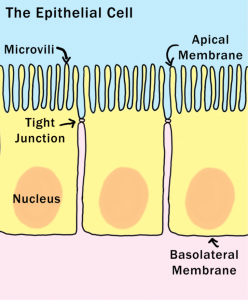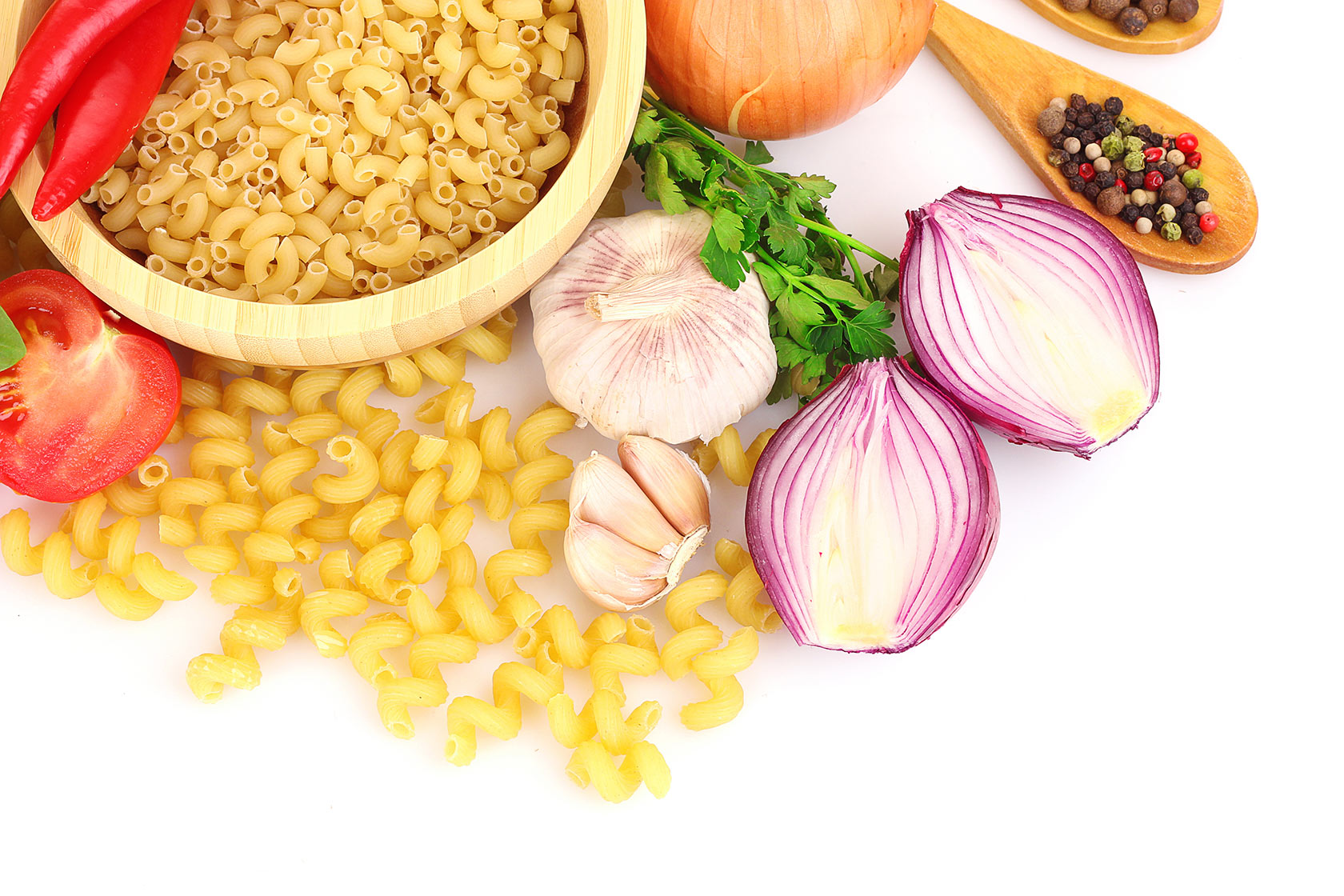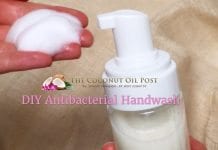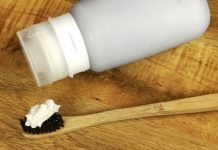When I was first diagnosed with IBS (way back when they called it Spastic Colon – yes you read that right) Leaky Gut was unheard of. When I was diagnosed with Candidiasis just a few years ago, it was mentioned but not much attention was given to it. Today Leaky Gut is almost a common term known in most alternative medicine and holistic medical circles, although many sceptics still refer to it as a hypothetical condition. (Source) Partly because many “fad diagnoses” seem to have interchangeable names. Some may call it IBS, others call it Chronic Fatigue or Fibromyalgia and then there is Oxygen deficiency and partly because whoever writes these articles clearly has never dealt with the symptoms that present themselves for these conditions, otherwise they wouldn’t be calling it hypothetical and not in the slightest worried about what the name is just how to fix the problem.
As with so with like many times before in my life, I self diagnosed Leaky Gut and only very recently.
** A note about self diagnosis. I have used many doctors, natural therapists and alternative healing methods during my lifetime that have sometimes worked, sometimes not. More times than enough, I’ve followed my gut instinct (excuse the pun) and found treatments and methods or protocols that have aided healing and recovery. I, in my humanness have been known to relapse in areas concerning my gut and if I had to return to a doctor or a practitioner every time that happened I’d be seriously financially down the drain not to mention that I would most likely be receiving the repeat information and there would be nothing new that I needed to hear. So my understanding of self diagnosis comes from living with gut issues since a very young age as well as food intolerances and sensitivities. After all these years I can recognise symptoms fairly quickly (although I like to be in denial) and know the steps I need to take in order to correct it. By the grace of God I have always been on the money with the steps I take both with my daughter and myself. I’m not here to promote self diagnosis, because everyone is different and doctors and practitioners are needed for many things. However I have found that when it comes to the gut, unless there is a blood test or something definitive, doctors or GP’s often don’t get the full picture and many alternative practitioners send you home with buckets of supplements. So hence, why I self diagnose. It doesn’t mean I refuse to consider a doctor’s opinion or suggested treatment. There is a time and place for everything. **
In the last 3 months my gut relapsed and with complete denial (often the first step) I managed to convince myself that everything would be okay and the symptoms would go away in a day or two, because I must of just eaten something that my body had a reaction to. Well that was back in April. It took me a little while to work out (come out of denial) that I had overdosed on dairy (I have a high intolerance to dairy but like to believe that I can overcome that intolerance by eating small amounts!) This worked for at least 7 months but forgetting that I do have an intolerance I conveniently forgot what the symptoms looked like until I was a few more symptoms down the track. Fortunately and by much grace I twigged after a few months of bloating, cramping, pain and dreadful skin itches + restless legs that my gut was in fact leaky again! So here’s an overview, what I did to recover and in as little as a few days was symptom free. The gut damage will take a little longer to repair but as awful as Leaky Gut sounds and as mysterious as many might perceive it to be, it’s actually easy to get on top of.

Leaky Gut – Do you have it?
So What is Leaky Gut
Leaky Gut Syndrome also known as hyperpermeable intestines (medical term) is where the lining of the intestines has become porous or in simple terms has holes in it allowing much larger particles (proteins, pathogens) to enter the bloodstream and impact the immune system and other organs. Inflammation will begin as a mechanism to eradicate these enemies but the speed at which these predators (undigested food, pathogens and other bacteria) are hurtling into the bloodstream usually is far more than what the body can keep up with.
The next phase is usually the signs of intolerances or sensitivities to food and other chemical compounds including environmental. As the immune system sends in antibodies to fight what it thinks are foreign bodies, things like dairy, nuts, wheat, eggs, salicylic acid found in many foods, the body starts to produce many symptoms.

Leaky Gut Symptoms
Constipation, Diarrhoea and mucus in the stools are caused from inflammation of the bowel lining. Brain fog, headaches, lack of concentration and excessive fatigue are often caused from the level of toxins interfering with hormone production. Food intolerances result from undigested food particles infiltrating the blood stream. The more food particles enter the bloodstream the more antibodies are produced by the immune system causing multiple reactions to everyday foods. Reflux, nausea, bloating, gas and cramping during or after eating, memory loss and then there are skin rashes and conditions from the high level of toxins that the body is trying to push through the skin perforation to rid itself of them. Other symptoms such as restless legs, sinus and nasal congestion, mouth ulcers, anxiety, panic attacks and depression as well as more serious conditions such as malnutrition and other nutritional deficiencies , asthma, reproductive and menstrual problems, inflammatory bowel disease, ulcerative colitis, Chron’s disease, MS, Fibromyalgia, Chronic Fatigue Syndrome and Thyroid conditions. Inflammation no matter where it is in your body will eventually be the cause of many syndromes, conditions and autoimmune diseases that are prevalent in our society today.
What Causes Leaky Gut
Diet – A diet high in refined sugar, flours, preservatives, additives and flavours will eventually produce a toxic overload causing inflammation.
Food Intolerances – If a food is not tolerated (dairy, gluten, eggs, nuts etc) but still consumed, inflammation will occur and the gut lining will weaken and eventually permeate.
Antibiotics – Antibiotics taken more than a couple of times can suppress the immune system as well as kill off the good bacteria needed to keep the gut health in balance. This then allows for pathogens and other unfriendly bacteria to overrun the good causing inflammation and a weakened gut lining.
Medications – Prescription drugs and over the counter pain relief, such as Ibuprofen, Aspirin and other anti inflammatories interfere with the mucosal membrane of the gut lining creating inflammation.
Chronic stress – Stress in any form alters hormone production and secretion as well as altering the immune system, mainly suppressing it. The immune system weakens and is unable to do it’s job.
Bacterial Overgrowth – Candida and other bacteria’s growth increases and overtakes the gut causing inflammation and damage to the gut by permeating the lining.
Leaky Gut Treatment
Once diagnosed, Leaky Gut can be treated and symptoms can be relieved in a very short time. The condition however will take at least 6-12 months of treatment for the gut lining to heal and a full recovery can be made.
There are several ways to treat leaky gut and most protocols that are offered require several of the methods listed below to happen in conjunction with each other.
The following guidelines are taken from a combination of protocols that I have used:
Body Ecology
The GAPS Diet
SCD – specific carbohydrate Diet
Fodmaps Diet
Diet – Eliminating starches, sugars, grains, certain nuts, flours and processed foods is the first step. Removing foods high in salicylate and many of the foods that are high fodmap is also recommended.
See below for the foods that you can eat and the foods that are not suitable.
Probiotics – Either in the form of cultured or fermented vegetables or a capsule, a probiotic is essential for producing the good bacteria to start to fight back the overgrowth of pathogens and bacteria. Don’t introduce a probiotic until about week 3 or 4. Too much bacteria, whether it’s good or bad often produces more gas and bloating. Wait until the inflammation has calmed down and the bad bacteria has been starved of food and then introduce probiotic formulas.
Digestive Enzymes – In most situations where leaky gut is present, the digestion and it’s ability to break food down is seriously compromised, which causes the bloating, cramping and abnormal bowel movements. Digestive Enzymes are an essential component to helping the digestion get back on track, aiding the breakdown of proteins in the diet and allowing foods to be digested at a rate that does not cause stress to the gut lining. HCL by Pure Innovations (available at most big health food stores) is one of the best digestive enzymes that I have used combining a zinc compound (which will also help repair the gut lining) with ginger, Gentian root powder and tangerine peel extract. There are many other Digestive Enzymes on the market, like with any supplement, you will need to find one that works for your body.
Taken with meals it will very quickly help with constipation or diarrhoea and nausea associated with leaky gut.
Supplements – After your body starts to feel at ease again and the symptoms are decreasing, supplements can be added. Zinc supplements, Vitamin B and C or a multivitamin can all help with the healing process and boost your vitamin and mineral stores that had previously been depleted.
Bone Broth – Bone broths provide not just a power pack of nutrients but the gelatine and collagen content of the bones provides great benefits to aid the structural healing of the gut lining itself.
Saturated Fats – Saturated fats are needed in the diet for many reasons, but mainly because they are essential for the absorption and the production of many vitamins and hormones that our bodies need to heal fully. The fatty acids in coconut oil and butter are also essential for coating the cells and knitting together of cellular structures such as those found in the gut.
Leaky Gut Diet
What You Can and Can’t Eat:
Meats – Yes – free range chicken, grass fed beef, lamb, fish, tuna + Eggs
– No – cold cuts (ham, pepperoni, salami, bacon etc)
Grains – Yes – Quinoa, Millet, Amaranth, Buckwheat, some brown rice (occasionally), rice cakes or plain brown rice crackers, (gluten free pasta, gluten free bread after about week 3)
– No – wheat, barley, spelt, kamut or other wheat related grain, oats (while oats do not contain gluten – the protein can be hard to digest for sensitive tummies.
Dairy – No dairy for at least 3 – 4 weeks
Alternative dairy – rice milk, coconut milk (check for tolerance)
Fruit – Yes to Berries maybe 1/2 banana per day
– No – to all other fruit for at least 4 weeks – no dried fruit or fruit juices, no protein powders or vegetable and fruit antioxidant powders (high levels of sugar and often contain alcohol sugars such as erythritol)
Veggies – Yes – to all veggies except any that cause obvious upsets
– to be weary of – corn, tomatoes, capsicum, celery, onions, garlic
Legumes – Not for at least 3 weeks and then start very slowly as a food challenge
Bone Broths – Yes to beef, lamb or chicken broth either to add in to a meal or make a soup or simply drink as a broth along side of your main meals.
Nuts and seeds – Yes – but go easy on cashews, macadamia’s, pecans, sunflower seeds, pepita’s, chia or flaxseeds, coconut.
– No to almonds, hazelnuts, pine nuts, brazil nuts
Sugars – No sugars for at least 3-4 weeks. No cane sugar, honey, golden syrup, molasses, maple syrup, rice syrup, glucose powder or syrup, corn syrup.
– Yes to stevia (a natural sweetener made from the stevia leaves)
No processed or refined, packaged, take away foods.
Some suggested meal and snack ideas:
Meat with veggies – follow the 20% protein 80% vegetable rule on your plate
Roasts, pan fried, steamed, baked, stir fries.
Salads – with boiled eggs, tins of tuna, roast veggie salad
Grain meals – quinoa and vegetable hash, stir fries with quinoa or with Cauliflower rice also Quinoa Tabouli
Soups – chicken, vegetable made with homemade broth
Snacks – boiled eggs, veggie sticks and veggie dip, plain potato chips, small handful of nuts, slice of toast with avocado, rice cakes or crackers with dip or avocado.
Coconut granola, coconut yogurt, smoothie with coconut milk, strawberries and coconut yogurt
Protein balls – made with cocoa, coconut oil, shredded coconut, flaxseeds or chia seeds & stevia
Homemade chocolate – cocoa, coconut oil with stevia to sweeten.
Introducing Challenge foods
After 3-4 weeks, and providing the symptoms have eased, then you can try challenge foods.
A challenge needs to be done over a day and then wait for another 2 days before challenging the next food.
Eg: Challenge dairy – introduce milk for 1 day. Have a serve for breakfast and a serve for 1 other meal. Wait for 3 days to see if any symptoms emerge and before challenging the next food. If no symptoms emerge, then continue with the food but don’t go overboard.
Second challenge: Introduce a new food and repeat as above.
And so on. The trick is to not overload the digestive system too early and too quickly.
Finally, don’t stress – do things as simply as possible. The stress will only exacerbate the symptoms so take it slowly and be very kind on yourself.
How about you? Do you have any leaky gut solutions that have worked for you? Have any questions? Leave a comment below or connect with me on facebook





























